
As this blog has taken shape over the years, I’ve made reference to the fact that the original intent was to gather up game reviews I’d previously written into a single source repository. Any article beginning with a “Review archived from [Date]” citation originally appeared somewhere else. What I’ve never made explicitly clear was that a great many of those articles originally appeared as forum posts on sites like Racketboy, Hardcore Retro Gaming, and a handful of others. Since those early days, the blog has grown (although it certainly hasn’t ‘matured‘), and nowadays the articles appearing here are exclusive to the blog itself. That said, I do sometimes miss the social aspect of forum style reviews, and the great conversations that spun out of those posts. So lately I’ve been dredging through some other fantastic gaming blogs just to see what the gaming blogosphere has been up to lately. And that’s how I came upon the transformative story of Indie Gamer Chick’s formidable legacy of Cuphead reviews, an epic saga presented in no less than eight installments over the course of four years. I laughed, I cried, I developed a pathological urge to play Cuphead for myself. These were compelling articles, and she’s a great writer! That’s how it’s done folks! In fact, if you’re looking for quality Cuphead material, I suggest you go read her articles before, or perhaps even instead of this one (I’ve linked the first one here, I’ll link the rest below). I won’t even be mad! Go on now, get!
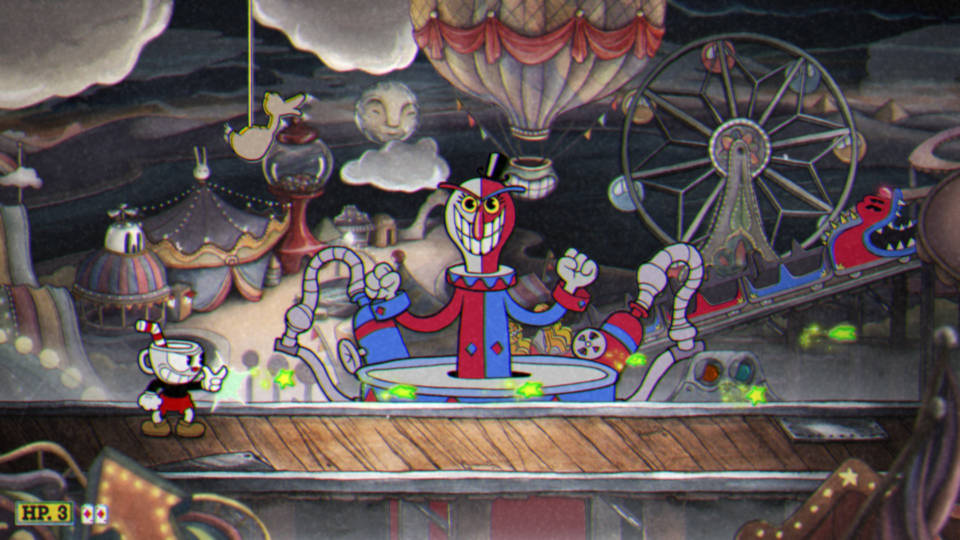
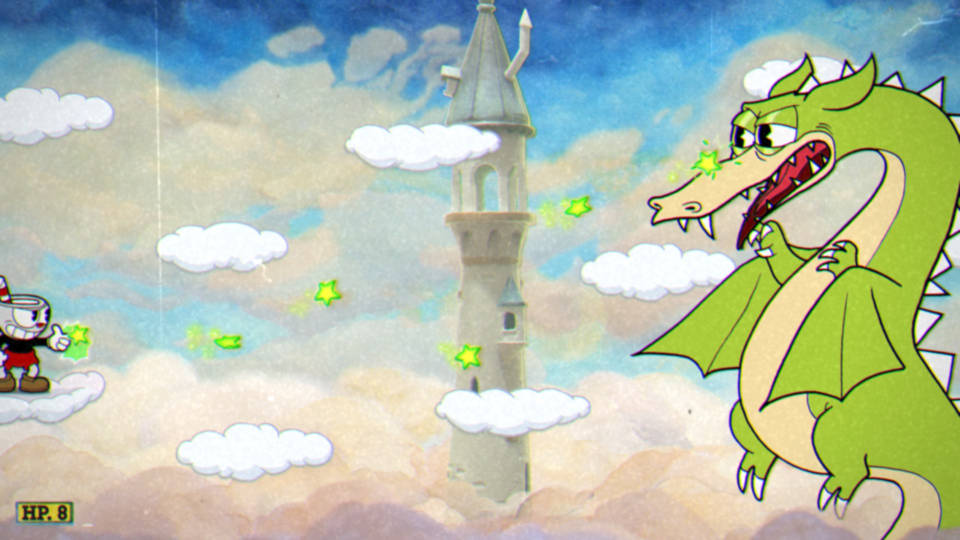
Aw, you’re still here? How sweet of you. I shall now bestow upon you the ‘nullGaming Loyal Reader Badge©‘, to be worn with pride at distinguished social galas and exclusive private events. At any rate, the Indie Gamer Chick articles on Cuphead resonated with me. These articles speak to the way a game can embed itself within your psyche, the way that sometimes you simply can’t put a game aside even in the face of overwhelming odds, the way that certain games compel you to just give it just. One. More. Try. Ultimately her articles speak to the idea that dogged and unwavering perseverance can eventually be transmuted into the elation of triumph over difficulty. And friends … Cuphead is one fabulously difficult game.
So yeah, now that we have what is undoubtedly the longest, most meandering, introduction I’ve ever written for the blog out of the way (geez null, is this a gaming blog or a cooking blog?), let’s dig into Cuphead shall we? You know those urban legends of ne’er-do-wells putting razor blades in kids candy on Halloween? Yeeeeah … let’s just say that’s a fitting metaphor for Cuphead. It’s all the joyful wonderment of childhood imagery wrapped around a razor-sharp core of misery that will absolutely eviscerate you without mercy or regret.
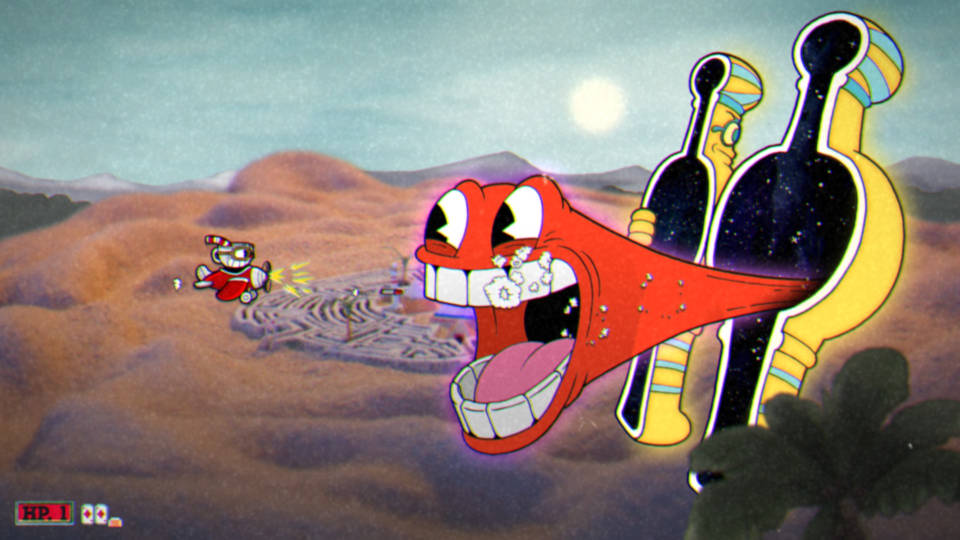
Ominous! But let’s start with the obvious. This game is absolutely gorgeous. The visual style is a loving homage to cartoon shorts of the 1930’s as created by Fleisher Studios (known for Koko the Clown, Betty Boop, Popeye the Sailor, and others) as well as the early works of Walt Disney (known for like, a mouse or something?). All the characters in Cuphead are original creations, but any of them could have easily appeared in the combined works of the above studios. Studio MDHR are clearly astute students of this era of animation, and that shines through in each and every frame of the game. From small character details and visual gags to the film grain filter overlaid on top of the action, everything just exudes this highly polished attention to detail. And that meticulous approach to presentation undoubtedly extends to the incredible OST as well. Period appropriate jazz, big band, and ragtime tracks rule the roost here, any one of which could have served as musical score to of one of the classic cartoons mentioned above. The music is just so incredibly good. I have no qualms calling this the best game soundtrack I’ll hear this year … and currently it’s only May. The key takeaway from this utterly shameless slathering of praise is that the presentation in Cuphead is unreservedly top notch. I’m even prepared to say it’s the best presentation I’ve ever seen in an indie game.
Now that we’ve talked about Cuphead’s beauty, it’s time to talk about … the beast (Ha! Disney pun! Priceless!). Much has been made of Cuphead’s difficulty, and that’s not without good reason. All that la-di-da ‘wonderment of childhood’ nonsense? Cuphead’s difficulty turns that wonderment over its knee and paddles its ass it until it cries for reprieve. Still … it’s not the toughest game I’ve ever beaten, though it does rank up there. So let’s dive into the gameplay to see what we can make of it.
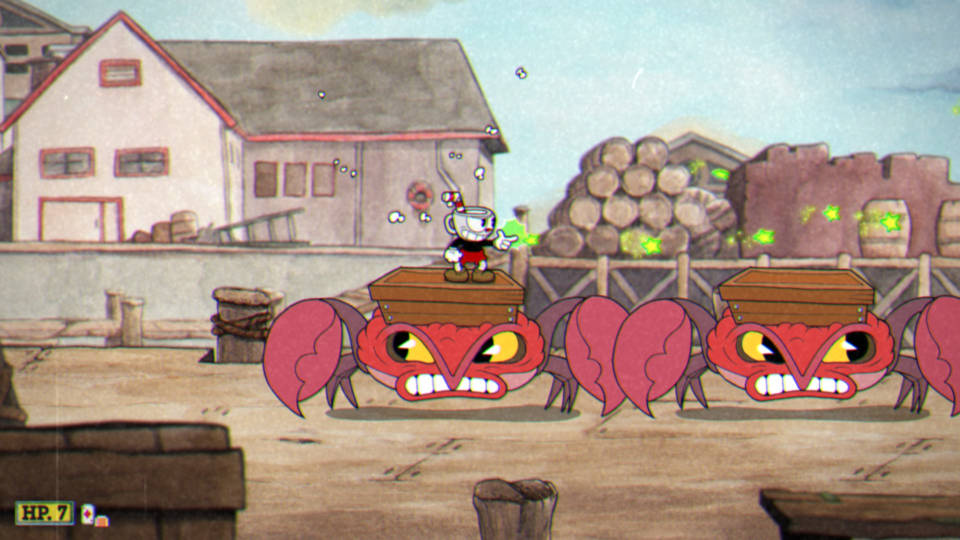
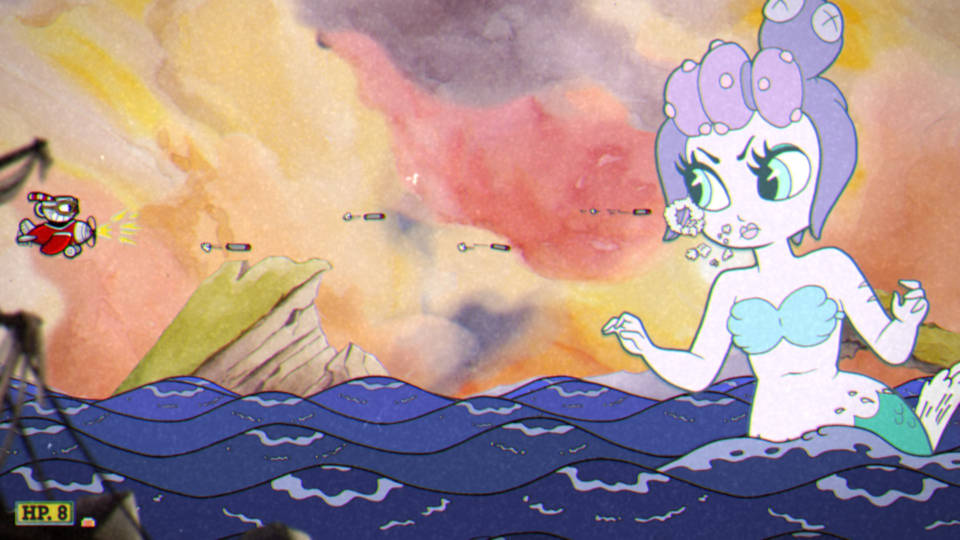
Mechanically, Cuphead amounts to Boss Rush: The Game. If boss battles aren’t your thing, then this game isn’t going to be your Cuphead of tea. Second to only vintage animation, it seems that Studio MDHR’s other great love is the art of the boss battle. And to that end they have made a careful study of what makes a good boss battle and the nuanced mechanics thereof. Outside of a couple early fights, the boss battles in Cuphead are truly some of the best and most exhilarating I’ve battled through. But it needs to be said that each and every one of them is a battle. There’s a certain philosophy of game design which stipulates that if a boss can be beaten without dying on your first attempt, then it was far too easy. That seems like a fair assessment, though in Cuphead’s case the maxim seems to be anything less than five times, was too easy … and that’s only if you get lucky on your fifth try. Be that as it may, Cuphead’s difficulty is mostly of the “tough but fair” variety … but hot damn is it tough at nearly every available opportunity. It’s here that we need to address the intentionally vague descriptor of ‘old-school toughness’. In the case of Cuphead this means two things. First, your eventual success against a given boss will rely entirely on your pattern memorization skills. Most of the bosses execute a finite and (eventually) predictable set of moves across a variety of phases. Secondly, the only way to memorize all these varied and numerous patterns, is to die. A lot. Over and over again relentlessly, and without loss of enthusiasm. This is a game of inches, where you can count yourself lucky if each successive boss fight attempt lasts a few seconds longer than the last. And then a few seconds beyond that, until you reach the next phase of the boss, and the process starts all over again. Finally, long after you’ve lost track of how many times you’ve been defeated in your attempts, all those seconds eventually add up until you hear the triumphant sound of the announcer declaring “KNOCKOUT!”. (At which point if you’re anything like nullPointer, you proceed to lean back in your chair and flip those double birds at the screen. Stupid toons.) Then it’s on to the next boss and the process begins anew.
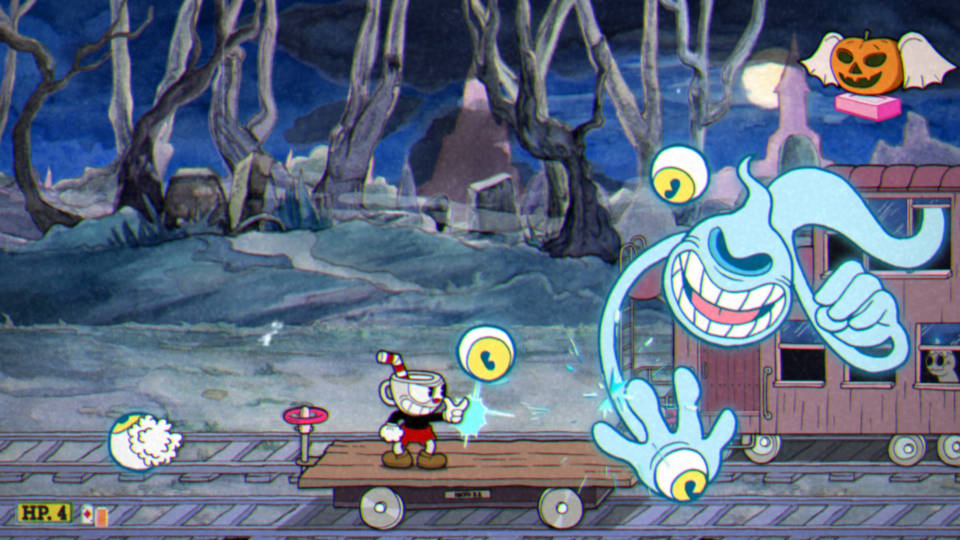
So yeah. It do be like that. Truthfully one of the primary sources of difficulty here is that for the most part you only have three hit points, from the very first battle to the last … three hit points. I suppose that makes sense being as your head is a fragile teacup but I mean … three frickin’ hit points!! There are a couple ways around this of course. Certain equippable charms in the game grant one and eventually two additional hit points and that can help quite significantly, but … with the substantial drawback that these charms make your gun weaker … and thus the fights last longer … which opens up more opportunities for failure. I suspect if Cuphead had a Mega Man style life bar, we would not be talking about it in the same breath as other legendarily difficult games (get the hell out of here Battletoads, no one asked for you). But now imagine going through an end game boss rush in a Mega Man game where you only have three hit points to last through the whole thing. That’s basically Cuphead.
The question then becomes, how do we balance Cuphead’s difficulty against its incredible presentation elements? And the answer of course is, “your mileage may vary”. If you’ve ever attempted a no-hit run of a Mega Man (or similar) game, you’re going to have a blast with Cuphead. If you have low tolerance for this approach of dying endlessly until you succeed, then it’s going to feel like a special sort of Inkwell Hell. But with that in mind, I can’t really qualify the game’s difficulty as a fault; the level of difficulty is the result of very careful design after all. So what are the faults? Well, it’s taken me this long in the review to talk about the run-and-gun levels. These levels play as more ‘standard run-and-gun’ fare featuring only a mid-level mini-boss at most. I hadn’t mentioned them until now, because they basically feel like an afterthought. It’s as if 90% through development StudioMDHR suddenly had doubts regarding their “all bosses, all the time” approach and decided to sparingly pepper in these levels to shake things up. These levels are fine, but compared to the boss fights, they’re easily the most forgettable sections of the game.
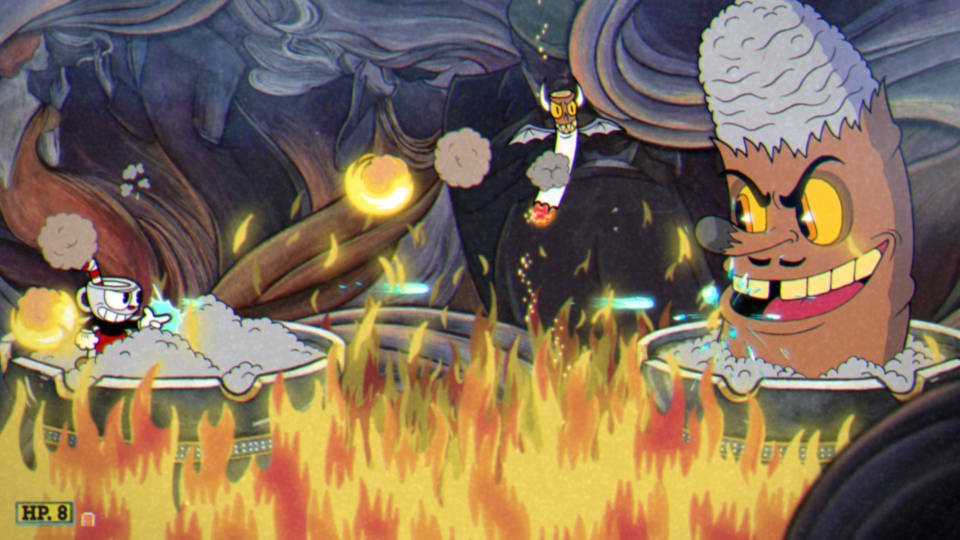
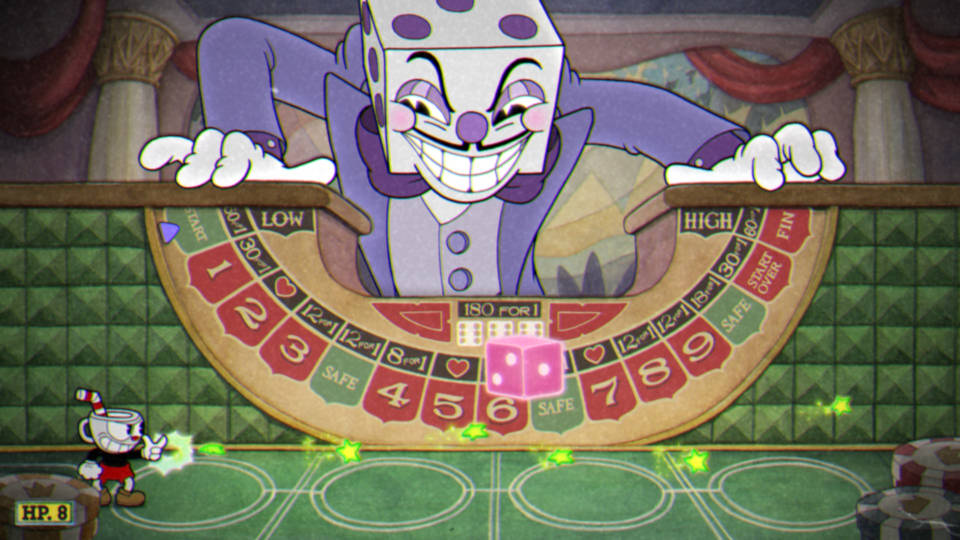
In the end a playthrough of Cuphead feels a bit like a Dickensian effort. Because much like A Tale of Two Cities … playing Cuphead was the best of times, it was the worst of times. If high difficulty and frequent death sounds like a quick recipe for frustration, you may want to steer clear of this one. The trick of course is that the charming presentation strings you along, and makes the effort of “just one more try” feel like it’s not such a chore. Does that make Cuphead an example of form over function? Not at all. Because as I alluded to above, the fights in Cuphead are very carefully tuned and balanced (for the most part). I mean … they’re undoubtedly balanced towards difficulty, but that difficulty never feels random or super unfair. And this is the other factor that bluffs one into a sense of false bravado; the idea that if you can just tweak your approach and/or timing, you’ll undoubtedly be met with success in your next attempt. Overall I enjoyed my time with Cuphead quite a lot, but it’s not going to be for everyone. For my part I look forward to grinding my way through The Delicious Last Course DLC offering (which let me just say … fantastic use of an acronym), and I’m sure I’ll be gritting my teeth and cursing the entire time until such point that I beat it and declare, “Hey, it wasn’t so tough after all”. That’s just the nature of Cuphead.
Final verdict: 9 KNOCKOUTs out of 10 attempts (which was really more like 1000 attempts, but hey we’ll just fudge that number in the retelling amirite?)
Indie Gamer Chick’s Epic Cuphead Saga:
Leave a Reply